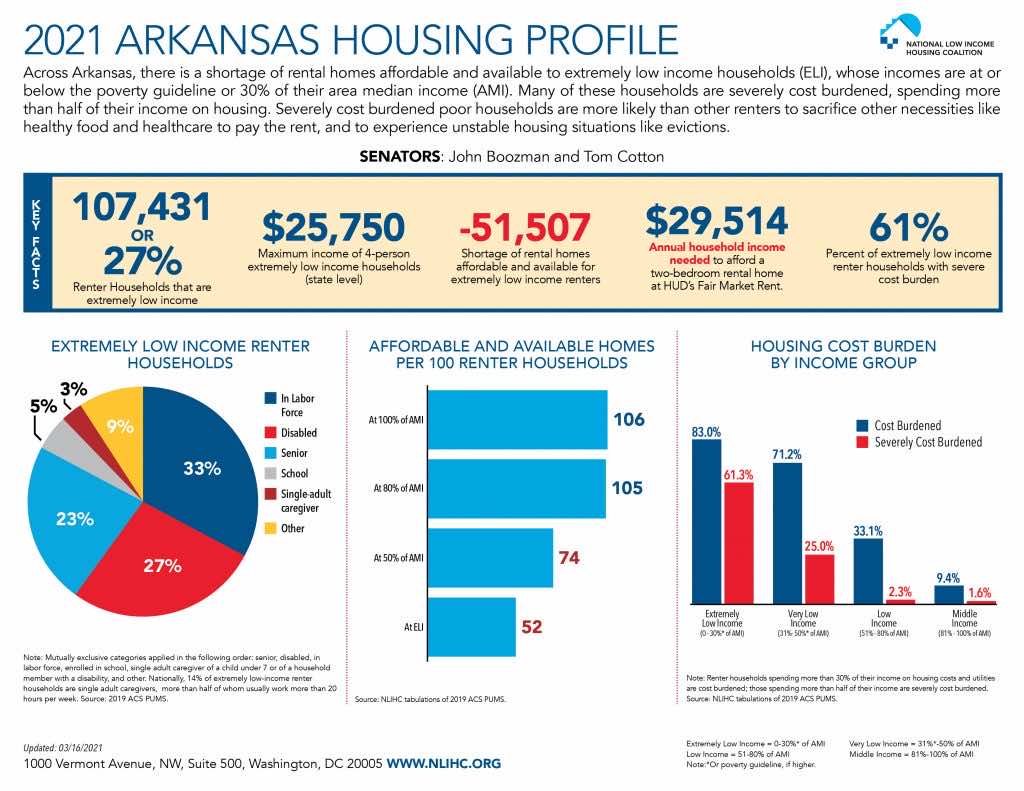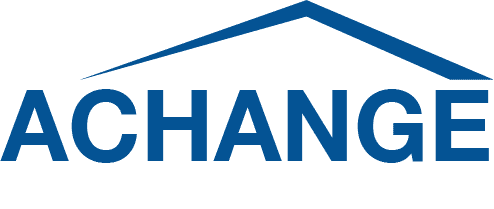The NLIHC Releases “The Advocates Guide 2025”
On May 29, 2025, the National Low Income Housing Coalition (NLIHC) released the Advocates’ Guide 2025: A Primer on Federal Affordable Housing and Community Development Programs and Policies. Published annually, the Advocates’ Guide is a comprehensive resource designed for advocates and others involved in affordable housing and community development advocacy. The Advocates’ Guide comprises hundreds of pages of useful information and articles written by leading experts in the affordable housing and community development field with the aim of educating readers about the programs and policies that make housing affordable to low-income people across America.
The Guide is considered by many to be the leading reference work for advocates and affordable housing providers looking for a quick and convenient way to understand federal affordable housing programs and policies. The book covers a wide range of material, with sections on advocacy resources, rental housing programs for the lowest-income people, the national Housing Trust Fund, community development resources, housing tools, special housing issues, tenant protections and eviction prevention resources, disaster housing recovery, and much more.
An essential resource for anyone interested in affordable housing and community development, Advocates’ Guide 2025 is meant to answer any and all questions about federal housing policy. A perfect primer for those new to affordable housing and community development, the Guide also provides experienced advocates with the latest updates on changes to federal housing programs, funding information, and new legislative threats and opportunities. Click the link to read and download the Advocates’ Guide 2025: A Primer on Federal Affordable Housing and Community Development Programs and Policies.
NLIHC Releases 2025 Gap Report
THE AFFORDABLE HOUSING SUPPLY IN ARKANSAS IS INSUFFICIENT, ESPECIALLY FOR FAMILIES WITH THE LOWEST INCOMES
The Gap: A Shortage of Affordable Homes, a new report released in March 2025 by the National Low Income Housing Coalition (NLIHC), finds a national shortage of over seven million affordable and available rental homes for extremely low-income (ELI) renter households, those with incomes at or below the poverty level or 30% of their area median income. There are just 35 affordable and available rental homes for every 100 ELI renter households nationwide.
Seventy-five percent of the poorest renter households are severely housing cost-burdened, spending more than half of their incomes on housing, with little left over for other basic necessities.
In Arkansas there are approximately 115,342 extremely low-income households but only 57,585 affordable rental homes available to them. The result is only 50 affordable and available rental homes for every 100 households with extremely low incomes. Approximately 69% of renters with extremely low incomes are severely cost burdened and at risk of homelessness.
Without public subsidies, the private market does not provide an adequate supply of rental housing affordable to low-income households. Even if rents fall during an economic downturn, they will not fall sufficiently to provide extremely low-income renters with an adequate supply of affordable housing.
Owners have an incentive to abandon rental properties or convert them to other uses when rental income is too low to cover basic operating costs and maintenance. Because the market consistently fails to provide adequate, affordable housing for these renters, the government has an essential role to play to correct for this failure.
For additional information, visit: https://nlihc.org/gap
Be Recognized by Your Peers for Your Hard Work in Affordable Housing!
Enter the Competition for the 2024 ACHANGE Excellence Awards!
Three individuals and/or organizations will be honored at the upcoming ACHANGE symposium June 20-21. The awards categories are:
Innovation in Housing Design and Development: recognizes the creativity, originality and breakthrough thinking in developing housing, whether single family, multifamily or a derivative thereof, Recognition will be given to the individual/organization/business that is transforming the affordable housing landscape in their community.
Best in Housing Revitalization: recognizes the individual/organization/business that has taken a formerly blighted or neglected property and redeveloped the property into quality housing for people with modest incomes.
Best in Community Economic Development Partnership: recognizes a private/public partnership that has/is improving the quality of life options within their community.
Awards competition rules:
- Open to anyone who performs work related to affordable housing in Arkansas, even if located elsewhere.
- Nominations may be accepted for individuals, public or nonprofit organizations, or private-sector businesses.
- Nominations must be received no later than 5:00 p.m. on Wednesday, June 12, 2024.
- Only nominations made using the official nominating form distributed via this e-mail will be accepted.
- Projects must have been performed in Arkansas.
Click here for the ACHANGE Awards Nomination Form
Once complete, return Nomination Form to ACHANGE by emailing to admin@achange.org
The Housing Crisis in Arkansas: Part of a series exploring issues from the Community Foundation’s Aspire Arkansas Report
“Homeownership is an important factor for neighborhood stability and civic participation. A home is a vital financial asset for a family and an investment in both the local neighborhood and surrounding community. In Arkansas, homeownership is only a dream for many. The data from AspireArkansas.org — Arkansas Community Foundation’s source of online data on education, healthcare, families and communities — tells us that the homeownership rate in Arkansas is 66% and trending down since COVID. The data also shows us that homeownership rates vary across racial and ethnic groups: 71% for whites, compared to 44% for Blacks and 52% for Hispanics. These disparities also continue to increase since COVID.”
NLIHC Spearheads Effort to Advance National Housing Policy
Be a part of the movement by joining HoUSed: Universal, Stable, Affordable. Find information and a toolkit on our Resources page.
Southern Bancorp Community Partners Needs Your Input
Southern Bancorp Community Partners received a grant from the Arkansas Community Foundation to study the accessibility and impact of housing counseling in Arkansas and to develop policy recommendations based on the study results.
We are currently working to identify individuals and organizations that work with housing counseling agencies (e.g., funders, referral sources, partner organizations for services, etc.) with whom to conduct key informant interviews about their work with counseling agencies and any policy barriers identified. Interviews will be conducted during August over Zoom. All responses will be aggregated and no personal information will be disclosed in public reports. If you are interested in being interviewed, please contact Janie Ginocchio at janie.ginocchio@banksouthern.com or at 501-351-4847.
CFPB Releases Online Tool to Help Renters and Landlords Access Federal Assistance
New resource helps renters and landlords find state and local programs distributing federal rental assistance funds
WASHINGTON, D.C. — The Consumer Financial Protection Bureau (CFPB) today released an online tool to help renters and landlords impacted by the pandemic easily find and apply for payment assistance for rent, utilities and other expenses. The Rental Assistance Finder connects renters and landlords with the state and local programs that are distributing billions of dollars in federal assistance nationwide to help renters stay housed during the pandemic. “Millions of people are behind on their rent and at risk of eviction as a result of the pandemic,” said CFPB Acting Director Dave Uejio. “The Rental Assistance Finder will make it easier for renters and landlords to locate the financial assistance available in their area. People across the country are already receiving billions of dollars in assistance, and with this new tool we hope even more renters and landlords will take advantage of this emergency relief. This money is a win-win for both landlords and renters and a better outcome for all than costly, needless evictions.”
According to a CFPB analysis of Census Household Pulse Survey data from June 23–July 5, 16 percent of adults living in households who rent said they are currently behind on their payments. Of adults living in households behind on rent, 49 percent, or approximately 3.6 million of them say that eviction in the next two months is somewhat or very likely.
As part of an unprecedented economic recovery effort, the federal government has allocated more than $46 billion to assist households unable to pay rent, utilities, and other housing costs. All 50 states and hundreds of local, tribal, and other programs are distributing funds. The CFPB’s Rental Assistance Finder tool will make it easier for renters and landlords to connect with rental assistance programs in their area, and take the first steps toward accessing available funds.
The CFPB is working closely with partners across the federal government to provide homeowners and renters the resources they need, including information to understand their rights and protections. Along with the U.S. Departments of Agriculture, Housing and Urban Development, Treasury, Veterans Affairs, and the Federal Housing Finance Agency, the CFPB has created consumerfinance.gov/housing, which serves as the federal government’s one-stop, go-to resource for up-to-date information on relief options, protections, and key deadlines.
The CFPB has taken other actions to support renters during COVID-19, including a joint statement with then-FTC Acting Chair Rebecca Kelly Slaughter promising to monitor illegal eviction activity, an interim final rule detailing illegal debt collection practices in connection with evictions during the pandemic, and a bulletin explaining Fair Credit Reporting Act obligations related to the reporting of rental and eviction information during the pandemic, including particularly the treatment of rental assistance payments.
NLIHC Releases 2021 Gap Report
THE AFFORDABLE HOUSING SUPPLY IN ARKANSAS IS INSUFFICIENT, ESPECIALLY FOR FAMILIES WITH THE LOWEST INCOMES
The Gap: A Shortage of Affordable Homes, a new report released March 18 by the National Low Income Housing Coalition (NLIHC) and ACHANGE, finds a national shortage of nearly seven million affordable and available rental homes for extremely low-income (ELI) renter households, those with incomes at or below the poverty level or 30% of their area median income. There are just 37 affordable and available rental homes for every 100 ELI renter households nationwide. Seventy percent of the poorest renter households are severely housing cost-burdened, spending more than half of their incomes on housing, with little left over for other basic necessities. The report shows that even before COVID-19 devastated many low-income households, they were already struggling to afford their rent.
Every year, The Gap reports on the severe shortage of affordable rental homes available to extremely low-income families and individuals.
In Arkansas there are more than 100,000 extremely low-income households but only 55,924 affordable rental homes available to them. The result is only 52 affordable and available rental homes for every 100 households with extremely low incomes. Approximately 61% of renters with extremely low incomes are severely cost burdened and at risk of homelessness.
Without public subsidies, the private market does not provide an adequate supply of rental housing affordable to low-income households. Even if rents fall during an economic downturn, they will not fall sufficiently to provide extremely low-income renters with an adequate supply of affordable housing.
Owners have an incentive to abandon rental properties or convert them to other uses when rental income is too low to cover basic operating costs and maintenance. Because the market consistently fails to provide adequate, affordable housing for these renters, the government has an essential role to play to correct for this failure.
The crisis created by COVID-19 has made it clearer than ever that stable, affordable housing for all is an imperative for public health and individual well-being. When it became vital to maintain social
distancing, many families—who are disproportionately people of color–struggled to keep their homes. We need a robust eviction moratorium and easily accessible emergency rental assistance until renters have recovered from the COVID crisis. As The Gap shows, though, ending the long-term problem of housing affordability will require significant and sustained investments. We need a serious commitment to the production and preservation of affordable housing, an expansion of rental assistance to every eligible household, a stabilization fund to prevent evictions, and stronger legal protections for renters. Without these measures, the lowest-income renters will continue to be a hair’s breadth from severe harms.
For additional information, visit: https://nlihc.org/gap


